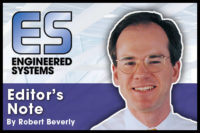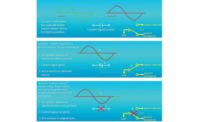The late Red Auerbach of the classic Boston Celtics teams earned a reputation for giving visiting teams less than a gracious welcome upon reaching the Garden for a game. You’ll hear stories of showers in the visiting locker room that suffered an unfortunate lack of hot water, or of nights where mysterious sauna-like conditions sapped the energy right out of the Celtics’ opponents.
HVAC doesn’t often make the sports pages, but readers of a certain age may have experienced a little déjà vu when the air conditioning went AWOL in Game 1 of the NBA Finals last month. Ironically, the heat took its toll on the Heat, with Miami’s LeBron James cramping up and missing some time in his team’s first loss in a series that would lead to a San Antonio championship.
Now, as the editor of a publication like this, I feel the need to point out: It was the electrical system’s fault! The air conditioning was just an innocent victim, according to arena officials. Not that that was much comfort to the Miami squad or the Spurs faithful who were breaking out what they could for fanning themselves. And that’s the lesson, isn’t? The building systems are only as good as their weakest link, and it doesn’t much matter which particular element failed when the occupants are sweltering and the cool air isn’t hitting the fans.
Part of the electrical system going down at a professional basketball game is one thing, but naturally it’s quite a different scenario if things go wrong at a hospital. That’s why you should have a look at Tim Coyle’s feature about designing standby power for health care in this issue. Getting it right for your specific locality and project is more complicated than the nuances of the triangle offense, but it’s worth it.
ES IN CHINA
In the Issues & Events section, you’ll find a big writeup on a recent trade show in China, with more on the way this fall. We’ve actually commenced with a version of ES for China, running selected features, columns, and news. The market there is growing fast, as evidenced by our expansion and by the comments from visiting attendees at the aforementioned show.
If that weren’t persuasive enough, a tweet from Bill Gates made some waves last month, referring to a recent book by Vaclav Smil. The key sentence from Smil: “China used more cement in the last three years than the U.S. used in the entire 20th century.”
That’s one of those sentences that I’m not sure the human brain is really all that naturally suited to grasp in full. But it’s worth spending a minute trying anyway. And one inference I feel pretty safe in drawing: there’s a pretty decent correlated spike in the HVAC market to go along with that boom.
Anyway, if you have special interest in the Chinese market, or if your company does business there, feel free to drop me a note or your press releases at beverlyr@bnpmedia.com. We will be looking to include additional content in our China issues that is especially suited for the market.
Mr. Smil, by the way, seems to study and write about an impressive swath of international issues, including energy and manufacturing but also dealing with some nonindustrial topics as well. If you’re like me and enjoy the occasional nonfiction on somewhat random topics by smart people, he looks like a decent candidate.
ABMA WELCOMES LYNCH
The American Boiler Manufacturers Association has announced Scott R. Lynch as its new President and CEO. Scott acquired 15 years of experience in association management with SmithBucklin before coming to ABMA. In fact, part of that work was with the American Bearing Manufacturers Association, so he’s probably now the only person to work closely with or for not one but two ABMAs. We wish Mr. Lynch the best of luck in his new position, and we’ll look forward to working with him on future issues of Today’s Boiler.




